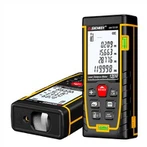Overview of Common Thickness Gauges for Paint Coatings at Home and Abroad
Application place
The coating thickness gauge can nondestructively measure the thickness of non-magnetic coatings (such as aluminum, chromium, copper, galvanized layer, enamel, rubber, paint, etc.) on magnetic metal substrates (such as steel, iron, alloy and hard magnetic steel, etc.) Plastic, rubber, oxide layer, phosphating film, etc.) and non-conductive coating thickness (such as: enamel, rubber, paint, plastic, etc.) Measurement of the thickness of plastic film, gold foil, tape, paper.
principle method
Magnetic thickness measurement
It is suitable for measuring the thickness of the non-magnetic layer on the magnetic material. Magnetic materials are generally: steel\iron\silver\nickel. This method has high measurement accuracy. This is the most commonly used method for measuring the thickness of anti-corrosion coatings on steel structures.
Eddy Current Thickness Measurement
It is suitable for measuring the thickness of non-conductive layers on conductive metals. This method is less accurate than the magnetic thickness measurement method.
ultrasonic thickness measurement
Some foreign manufacturers have such instruments, which are suitable for measuring the thickness of multi-layer coatings or where the above two methods cannot be measured. However, it is generally expensive and the measurement accuracy is not high.
Electrolytic thickness measurement
This method is different from the above three methods. It does not belong to non-destructive testing and needs to destroy the coating. Generally, the accuracy is not high, and it is more troublesome to measure than other methods.
Radiographic Pachymetry
The price of this kind of instrument is basically very expensive (generally above 100,000 RMB), and it is suitable for some special occasions.
Destructive (PIG) method






